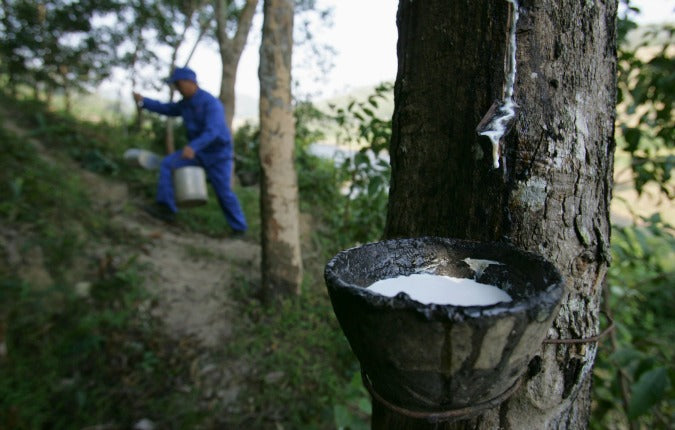
Natural Rubber vs EPDM
EPDM vs. Natural Rubber
Ethylene Propylene Diene Monomer - or - EPDM is a chemically-derived base polymer with excellent resistance to most materials except oil. EPDM performs best in high ozone and high sun light environments or around chemicals, steam or environmental temperature extremes. EPDM is what is known as a synthetic rubber. Other synthetic rubbers include butyl rubber, neoprene, silicone rubber, and nitrile rubber.
Natural Rubber is a tree-based polymer grown in parts of the world, ideally with high rainfall and humidity, high sunlight and little wind. In plantations Rubber trees can have a useful production life of up to 25 years. Natural Rubber works best in cold, wet environments or where high rebound, adhesion to metal or resistance to abrasion is required.
A synthetic rubber is an artificial elastomer. They are polymers synthesized from petroleum byproducts. About 32 million metric tons of all rubbers are produced annually in the United States, and of that amount two thirds are synthetic, while the remaining third is natural. However the vast majority of natural rubber produced in the world comes from three countries. Thailand, being the global leader in producing rubber, followed by Indonesia, and Vietnam. All three countries have the ideal environment to cultivate, and have extensive rubber farms. The first rubber tree was planted in Thailand in 1899, but they now have over 3,500,000 hectares of land dedicated to rubber growth, around 7.5% of their total land area.
EPDM is most commonly used in the automotive industry, in the form of seals, gaskets, hoses, windshield wipers, and more. It's water-proof and UV resistant properties make it ideal for seals, while it's chemical and moderate temperature resistance allows it to be used in coolant and engine oil systems.
When choosing between natural rubber and EPDM, consider what applications you are using the product for.
EPDM can generally withstand slightly higher temperatures than natural rubber, up to 275 F (135 C) vs. 180 F (82 C). EPDM does however start to shrink at high temperatures, while rubber does not. In cold temperatures natural rubber fares better than EPDM, being relatively resistant to cold temperatures. EPDM can become brittle and crack at too low of temperatures, making natural rubber the better choice in cold environments.
In terms of stretch, natural rubber stretches long before hitting a breaking point, while EPDM has a shorter elongation potential. Both are highly flexible, but EPDM can struggle with tearing over repeated use, meaning the product can get weaker over time, when compared to natural rubber.
In terms of sun resistance, EPDM is recommended over natural rubber, especially if the product will see continued use in the sun. While natural rubber can crack and lose it's strength when exposed to UV rays.
With the contrasting pros and cons of natural rubber and EPDM, neither is superior in all applications. Colder Environments might prefer natural rubber, while EPDM is likely the better choice for hot summer months. Regardless, your choice of natural vs synthetic rubbers should depend on your intended application of the product.
Click here to see Go-Tow's selection of high-quality rubber products, such as our natural rubber tarp straps.
